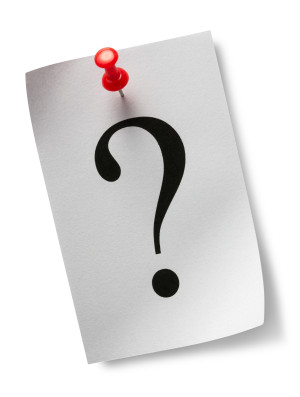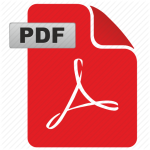Creativity
Creativity in a digital age

In a digital age, creativity has entered a new sphere. So much of what we do on a daily basis involves a computerized device, and whether we are creating new digital tools or using those tools to exercise our creative juices, we are in some way or another finding novel ways to explore ourselves and the world around us.
On 23 November 2016, we discussed current work on creativity in the broader context of the study of the mind as part of our Creativity & the Mind workshop, organised in collaboration with the Being Human festival of the humanities.
Computer Art & the Limitations of Current AI
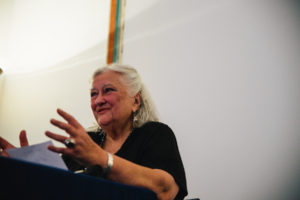 Margaret A. Boden has written extensively on the theme of artificial intelligence and the Mind, especially focused on issues around creativity. Margaret holds degrees in medical sciences, philosophy, and psychology, integrating them all in her research on AI and cognitive science. Her books include The Creative Mind: Myths and Mechanisms (1990/2004) and Mind as Machine: A History of Cognitive Science (2006).
Margaret A. Boden has written extensively on the theme of artificial intelligence and the Mind, especially focused on issues around creativity. Margaret holds degrees in medical sciences, philosophy, and psychology, integrating them all in her research on AI and cognitive science. Her books include The Creative Mind: Myths and Mechanisms (1990/2004) and Mind as Machine: A History of Cognitive Science (2006).Read more...
In March 2016, Google’s artificial intelligence program AlphaGo beat South Korean world Go champion Lee Sedol, winning with a 4-1 score. And many might remember that, a couple of decades ago, Deep Blue defeated chess legend Garry Kasparov. Nowadays Machine Learning makes headlines worldwide by implementing – with increased power – ideas that first came out about 30 years ago. No one would deny that such results are truly astonishingly and impressive, but visual computer art is challenging and hard to evaluate.
How is Machine Learning related to computer art? Deep learning is a branch of machine learning using multi-layered neural networks that attempt to model high level abstractions in data by finding specific patterns. Some suggested that the system could be used not only to find pre-existing structures in the data, but also to generate new compositions using images in databases. For example a computer can easily integrate a picture of your father with that of a dog, producing a new item. This would be new and surprising, but how do we assess its value?
The Cherry Picture (Kurt Schwitters, 1921) is a famous composition made of scraps and objects collected from Hannover, the artists’ hometown. It is composed of many different, unrelated images. Some coloured cherries are clearly visible at the centre. However, the composition does not have anything to do with cherries (or with anything else): it is abstract. Picking twenty random images, a computer might do something similar. However, to produce something interesting, one must know what the important visual principles are. How could anyone put those principles in a program given that programmers themselves cannot predict its outputs or guide the system? For the moment, computers can combine interesting pictures, but this is probably different from what we would call an interesting collage. In the XVI century, Arcimboldo created portrait heads entirely made by fruits or vegetables. Subtle abilities – far from those of contemporary computers – of visual comparison are required to produce works of this value and quality.
Source: Creativity & the Mind report
What’s Stopping People from Projecting Notions of Creativity onto Software?
 Simon Colton has specialized in questions of Computational Creativity, in particular investigating and developing novel AI techniques and applying them to creative tasks in domains such as pure mathematics, graphic design, video game design, creative language, and the visual arts. Simon is interested in raising the idea of autonomously creative software.
Simon Colton has specialized in questions of Computational Creativity, in particular investigating and developing novel AI techniques and applying them to creative tasks in domains such as pure mathematics, graphic design, video game design, creative language, and the visual arts. Simon is interested in raising the idea of autonomously creative software.read more...
Despite the reference to some mainstay elements, including novelty, there are no univocal definitions of creativity, which is rather a continuously moving target and an endlessly disputed concept.[1] We may think of creativity as a secondary (humans do not have a specific organ for it), and essentially contested [2] quality of a program or a person, which is conveyed by declarative, illocutionary acts.
One of the reasons that we struggle in approaching the products of computer art is that we feel we are losing interpretability. When we read a poem, we tend to associate it with the author’s real or plausible life and with his or her cultural background. We are compelled to project humanity into the author: we know stories about writers we are familiar with and we create tales about those we do not really know. How could we do the same when we are aware that the author is a computer? The difficulty in overcoming such a barrier might be behind the present crisis in computational creativity: our basic concept of creativity is rather human centric. But what could be interesting in computer art? Is producing a new form of entertainment enough, and is it a suitable goal for computational research? How could we engage in the philosophical debate about creativity starting from computer art? In the end, what, if anything, is holding people back from projecting creativity into a software?
[1] Cambridge Handbook of Creativity.[2] Gallie, W.B. (1955-56), Essentially Contested Concepts, Proceedings of the Aristotelian Society, New Series, Vol. 56: 167-198.
Source: Creativity & the Mind report
Creative Processes
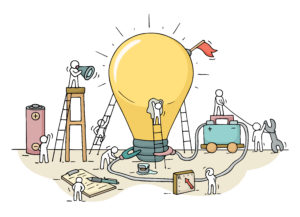 Is creativity a process? How does that process work and does the answer to this question differ depending on the type of creative exercise undertaken?
Is creativity a process? How does that process work and does the answer to this question differ depending on the type of creative exercise undertaken?
On 23 November 2016, we investigated some of the ideas about the process of creativity as part of our Creativity & the Mind Being Human festival event.
Romanticism & Situated Creativity

Berys Gaut is interested in aesthetics, especially its relation to ethics, philosophy of film and film theory, the philosophy of creativity, and moral theory. Berys is the author of two monographs, Art, Emotion and Ethics (Oxford University Press, 2007) and A Philosophy of Cinematic Art (Cambridge University Press, 2010). He is currently working on a new monograph, Exploring Creativity: A Philosophical Inquiry.
Read more...
However, following contemporary Situated Cognition Theory, this is unlikely to be a fair representation of how creativity works in general. Not only do the material aspects of creating a piece of art fundamentally depend on the relationship with the external world, but creativity itself may be shaped by external conditions and circumstances: the boundaries of cognition extend beyond those of individual organisms. Moreover, according to Embedded Cognition, cognitive activity exploits the structures present in the social and natural environment. Routinely, cognising agents create such structures in order to enable or enhance cognition itself.[3]As a matter of fact, the romantic conception of creativity is unsupported by scientific evidence about how the creative process unfolds. But how does the creative process rely on environmental factors? In a classic paper focussed on the distinction between imagery and perception, Chambers and Reisberg investigated if mental images could be ambiguous[4]. In particular, after being exposed (for 5 seconds) to ambiguous pictures – like the rabbit-duck – subjects were required to reinterpret the mental images of those bistable figures. Unable to recognise the second object hidden in the figure during the exposure, participants were able to discover it once they had to draw it by themselves. Such result suggests that people can imagine only a duck or a rabbit but, in the drawing process, they are able to see more. The fact that artists tend to prepare sketches before completing real work can be seen as evidence of how creativity needs to be activated in the external world in order to to unfold.
The idea of ‘incubation’ as a pure inner moment, culminating in a sort of illumination, is nothing more than a myth. But why do people describe insights as moments of pure inner inspiration? In the thirties, Norman Maier designed an experiment showing how people tend to confabulate, inventing tales that help them to explain unknown behaviours[5]. Asked to explore different solutions to a specific problem, participants tended falsely to describe the process of finding a way out as a sudden flash of insight, apparently ignoring the role of the external cues provided by the experimenter. Overall people tend to confabulate, misidentifying the source of the information they use to solve a problem.[6]In striking contrast with romantic myths, cognitive agents routinely structure the external environment in order to stimulate cognition and arouse the mind, creating tools for reinforcing intellectual abilities and working memory. We can find examples of this attitude throughout the history of Western culture, from Leonardo’s written work[7] to Frank Gehry, who describes himself as a voyeur of his thoughts, but constantly working with drawings and models.[8] Similarly, inventive individuals like Steve Jobs or John Lasseter have stressed the importance of promoting creativity by designing stimulating working environments: Pixar Animation Studios (Emeryville, California) represents a clear example of such philosophy.
[1] Konrad, U. (2006), Compositional method, in Cliff Eisen and Simon P. Keefe, The Cambridge Mozart Encyclopedia. Cambridge: Cambridge University Press, 100-108.[2] Collingwood, R.G. (1938), The principle of Art, Clarendon Press.[3] Robbins, P., & Aydede, M. (2008), The Cambridge Handbook of Situated Cognition, Cambridge University Press.[4] Chambers, D. & Reisberg, D. (1985). Can mental images be ambiguous? Journal of Experimental Psychology: Human Perception and Performance, Vol 11(3): 317-328.[5] Maier, N. (1931), Reasoning in humans. The solution of a problem and its appearance in consciousness. Journal of comparative psychology 12(2):181-194.[6] Seifert, C. M., Meyer, D. E., Davidson, N., Patalano, A. L., & Yaniv, I. (1994). Demystification of cognitive insight: Opportunistic assimilation and the prepared-mind hypothesis. In R. Sternberg, & J. Davidson (Eds.), The nature of insight, Cambridge, MA: MIT Press, 65-124.[7] Leonardo, Kemp, M. (2001), Leonardo on Painting: An Anthology of Writings by Leonardo Da Vinci, with a Selection of Documents Relating to His Career as an Artist, Yale University Press.[8] Isenberg, B. (2009), Conversations with Frank Gehry, Alfred A. Knopf; Van Bruggen, C. (1997), Frank O. Gehry: Guggenheim Museum Bilbao, Solomon R Guggenheim Museum.
Source: Creativity & the Mind report
How is attention related to creativity?
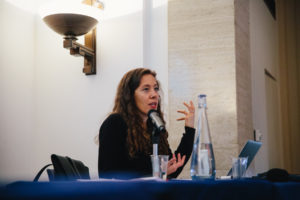 Aura Satz is Moving Image Tutor and Reader in Fine Art (Sound and Moving Image) on the Contemporary Art Practice Progamme at the Royal College of Art. Aura’s work encompasses film, sound, performance and sculpture. She is particularly interested in the modes of heightened perception and sensory disorientation such as flicker and psychoacoustics.
Aura Satz is Moving Image Tutor and Reader in Fine Art (Sound and Moving Image) on the Contemporary Art Practice Progamme at the Royal College of Art. Aura’s work encompasses film, sound, performance and sculpture. She is particularly interested in the modes of heightened perception and sensory disorientation such as flicker and psychoacoustics.Read more...
A different project is devoted to Hedy Lamarr’s “Secret Communications System”, invented by the famous Austrian actress and Hollywood star to help combat the Nazis in World War II. Patented by Lamarr and by composer George Antheil in 1941, the system was first implemented years later, when it was employed on naval ships during the Cuban Missile Crisis. Partially inspired by Antheil’s unsuccessful attempt to synchronise 24 pianolas for his avant-garde creation “Ballet Mechanique”, the invention involved frequency hopping, a method for manipulating radio frequencies at irregular intervals between transmission and reception, thus creating an unbreakable code to prevent messages from being intercepted by enemies. Despite the importance of her invention for subsequent telecommunication systems, during her lifetime Lamarr obtained very little recognition of her talent. Satz’s Impulsive Synchronisation (2013) rediscovered Lamarr’s forgotten invention. Impulsive Synchronisation is a film and technically complex sound installation he work consisting of a scrolling screen in constant motion. Not by chance, the movie projected onto the scrolling screen is an extract from a romantic comedy (‘Come Live with Me’, released the same year Lamarr and Antheil submitted the patent for their invention) starring Lamarr as an Austrian clandestine who metaphorically uses a flashlight to attract the mate as lightening bugs do.
Source: Creativity & the Mind report
Storytelling
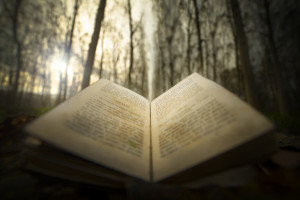 A story of the mind is a story of what makes us human.
A story of the mind is a story of what makes us human.
A story informed by the best science of the day and by a humanistic understanding of the contingencies of life and history. What is the role of storytelling in this endeavour? Is there a connection between the emergence of both spoken and written language, and the development of the mind? What sort of cultural instrument is literature? And what cognitive faculties does the use of literature employ, and empower?
On 9 March 2016 we investigated these ideas in a one-day conference entitled Language, Literacy, Literature & the Mind.
Sarah Churchwell
Beyond Symptomatic Reading
Charles Ferneyhough
The Voices in our Heads
Thomas Scott-Philips
The Evolutionary Origins of Human Communication and Languages
Have you ever wondered what happens in your mind when you read or see Shakespeare performed?
In tackling these fundamental questions about literature and the mind and their relation to one another, Dr Miranda Anderson draws on recent cognitive approaches to literature, illustrated with examples from Shakespeare and various other Renaissance works.
External Resources
Creativity and the Mind Report (November 2016)
The Human Mind Project teamed up with the brilliant Guerilla Science to create this one-day event on Creativity & the Mind as part of the Being Human festival of the humanities 2016. We were joined by facilitators The People Speak, who invited participants to take part in a series of talks, group discussions and creative challenges, documented by a live artist in a series of illustrations.
Questions
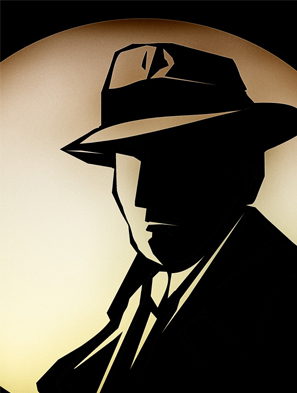
Is the self a work of fiction?

Is creativity a feature of the product, or the process, or both?

Is art just a matter of taste?
